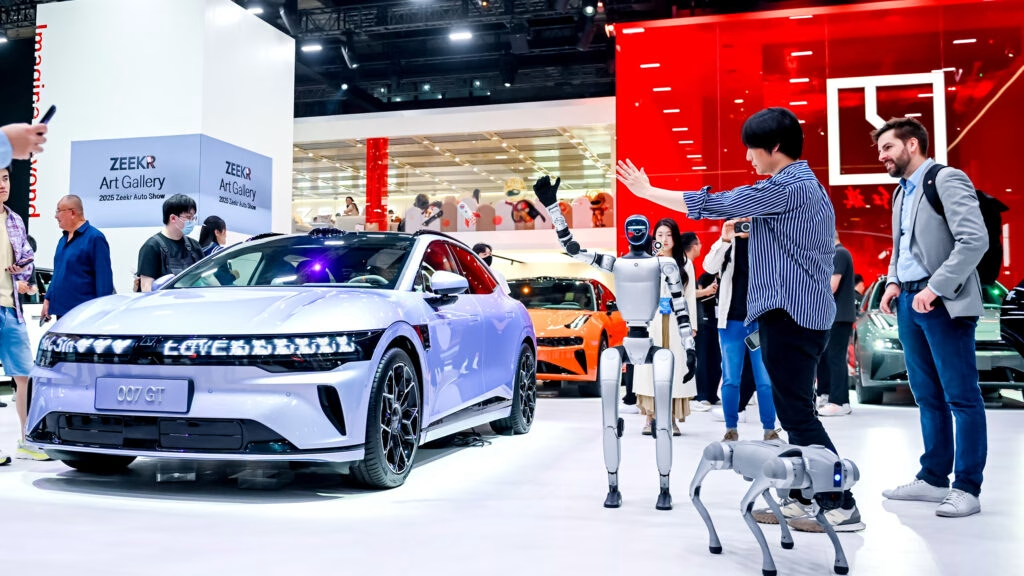The Shanghai Auto Show is making waves, and it’s not just because of the flashy cars on display. This year, a record number of journalists and influencers have descended upon the event, with many coming from Latin America—a region that’s increasingly becoming a hotspot for electric vehicle (EV) expansion. So, what’s driving this surge in media presence, and why should we pay attention?
Why Are So Many Journalists at the Shanghai Auto Show?
Motor shows in the West are facing a decline, with iconic events like the Geneva Auto Show shutting down. Meanwhile, China’s automotive scene is booming, boasting over 150 active brands eager to showcase their innovations. The 2025 Shanghai Auto Show is a testament to this growth, with local automakers realizing the importance of media coverage to enhance their global presence.
Historically, China has been quite selective about granting journalist visas. However, this year’s show marks a shift in policy, allowing for unprecedented access. Reports indicate that BYD alone hosted around 150 journalists and influencers, many from Latin American countries like El Salvador, Paraguay, Ecuador, Chile, and Peru. This targeted approach highlights the region’s potential, with the EV market projected to surpass $19 billion by 2030.
What’s the Experience Like for Influencers?
Attendees are not just getting a seat at the table; they’re being treated to a luxurious experience. Many influencers are staying in upscale accommodations, with some rooms costing as much as $375 a night. This level of hospitality is a clear strategy to ensure that these content creators leave with a positive impression of Chinese brands.
One influencer noted that the access granted this year is unlike anything seen before, which has sparked some jealousy among peers who feel left out. The goal? To create buzz and excitement around the brands that are making strides in the EV market.
What’s the Bigger Picture for Latin America?
The push into Latin America is strategic for several reasons. With BYD planning to manufacture over 150,000 cars annually in Brazil and MG establishing a plant in Mexico, the stakes are high. The region is ripe for EV growth, and Chinese automakers are keen to capitalize on this opportunity.
The presence of influencers from both Latin America and the West at the Shanghai Auto Show signals a broader trend. Even though many Chinese brands are not yet available in the U.S., influencers like Forest Jones—who has a substantial following on YouTube—are already advocating for the value these brands could bring to American consumers. His experience at the show, where he test-drove vehicles from brands like Lynk & Co., showcases the potential for these companies to break into new markets.
Are Western Brands Missing Out?
Interestingly, while Chinese automakers are rolling out the red carpet for influencers, some Western brands seem to be lagging behind in engagement. Influencer Felix Hammer, who traveled from Amsterdam, humorously pointed out that brands like Audi wouldn’t even consider flying him to Portugal for a similar experience. This disparity raises questions about how Western brands are positioning themselves in the global market and whether they’re missing opportunities to connect with potential customers.
The Future of Auto Shows and EVs
As the automotive landscape continues to evolve, the Shanghai Auto Show stands as a beacon of innovation and opportunity. The influx of media attention and the strategic targeting of markets like Latin America reflect a significant shift in how automakers approach global expansion.
The big takeaway? The automotive industry is not just about the cars anymore; it’s about building relationships and creating narratives that resonate with consumers worldwide. As we look ahead, it’s clear that the future of auto shows—and the brands that thrive—will hinge on their ability to adapt and engage with diverse audiences. So, whether you’re an industry insider or a curious consumer, keep an eye on these developments; they’re shaping the future of mobility as we know it.

